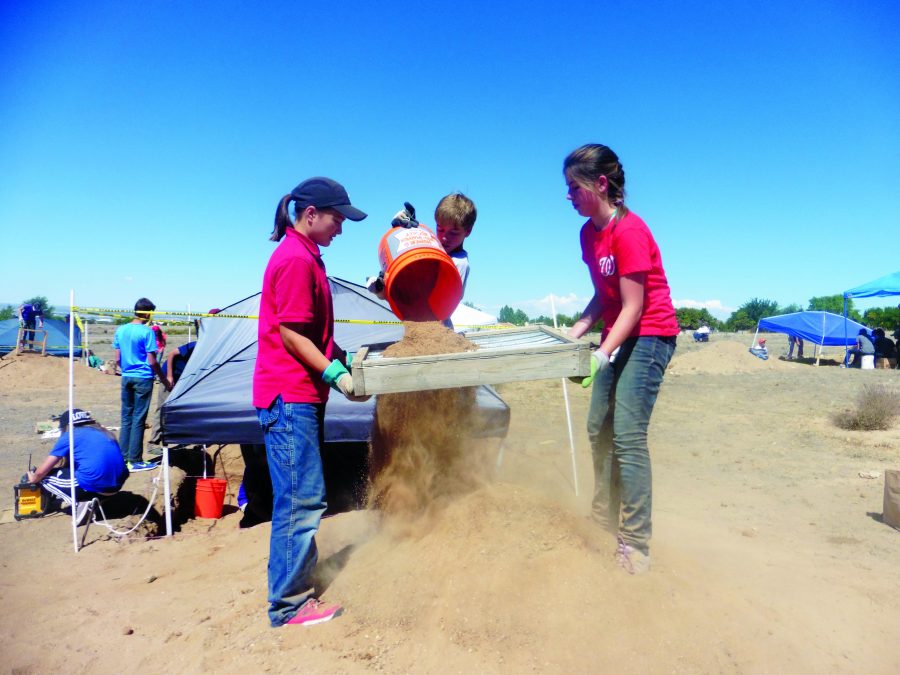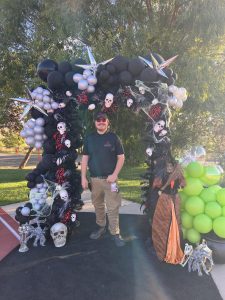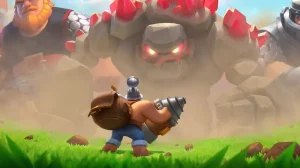Can you Dig it? Uncover the origins of the ancient Academy tradition
November 2, 2014
Under a sweltering September sun, eighth grade students meticulously scrape away at dirt in hopes of being the first in their class to discover a piece of a student-made artifact. It is truly a bizarre sight for passers-by: more than 100 thirteen-year-olds working away in pits on the Academy mesa. This 29 year-old tradition, fondly remembered by alumni and students alike, is known as The Dig.
For those unfamiliar with The Dig, it is a hands-on historical and archeological project for all eighth grade students at the Academy. It begins at the onset of the school year, when each history class is assigned to an ancient civilization. After writing a research paper, students are required to create a realistic artifact that is pertinent to one aspect of the culture of their civilization. The day before The Dig, students break their artifacts into pieces and bury them in layers of dirt in pre-dug square pits on the Academy mesa, which is located to the north of McKinnon Hall parking lot. Then, on Dig Day, students use archeological techniques and concepts learned in class to excavate the artifacts of another group. After reconstructing them at home, students deduce as a class which civilization they uncovered.
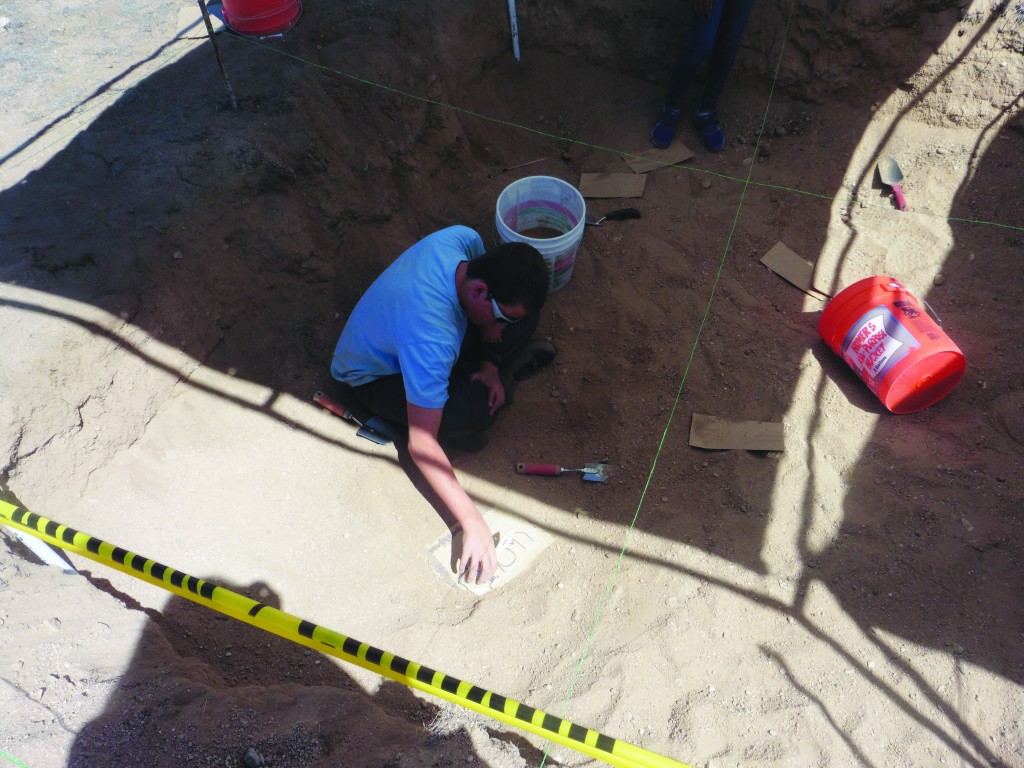
The Dig was first introduced at the Academy in 1985, and it continues to have the same fundamental role in the eighth grade history course now as it did then. For over 25 years, this Albuquerque Academy tradition has been held in the fall, with the exception of one year, when it was experimentally held in the spring. 8/9 history faculty member Paul Pressley has a perspective on The Dig as a graduate of the Academy as well as a current teacher. He also has had a career as an archaeologist. “The sheets we fill out, and the methods [quadrants marked off with twine, the tools,] we use are all accurate to what a real archaeological dig site might look like,” Pressley said. Many schools have sandbox or wastebasket digs, but the Academy is one of very few, if not the only, school to provide a life-sized and archaeologically authentic experience. “The only inaccuracy I find is how the artifacts [in The Dig] are all very nicely layered, in order to demonstrate the different time periods. In real life, those strata are not defined… time is pretty ambiguous when it comes to excavating a civilization.”
8/9 history faculty member Cathy Lydon played an important role in founding The Dig, and has many memories of the event. “The Dig has been done in a lot of different places on campus… One time, they were digging trenches behind the library to do some work, and they discovered a stone with petroglyphs. They took it to the university to be analyzed…. It was actually a student’s artifact from several years ago,” she said.
The Dig was created in order to teach archaeology to students, and to show them how and why people do not always understand all of ancient history. “You’re given this small piece of information and you’re supposed to figure out the entire culture,” Lydon said. The tradition originally began with students creating their own fantasy civilizations for the project. “One [fantasy civilization] I remember really well were the hippie Smurfs on the west mesa who worshipped Jolt,” Lydon said. However, students often found themselves focusing more on the comedic aspect than the educational. Eventually, The Dig shifted toward actual historical societies.
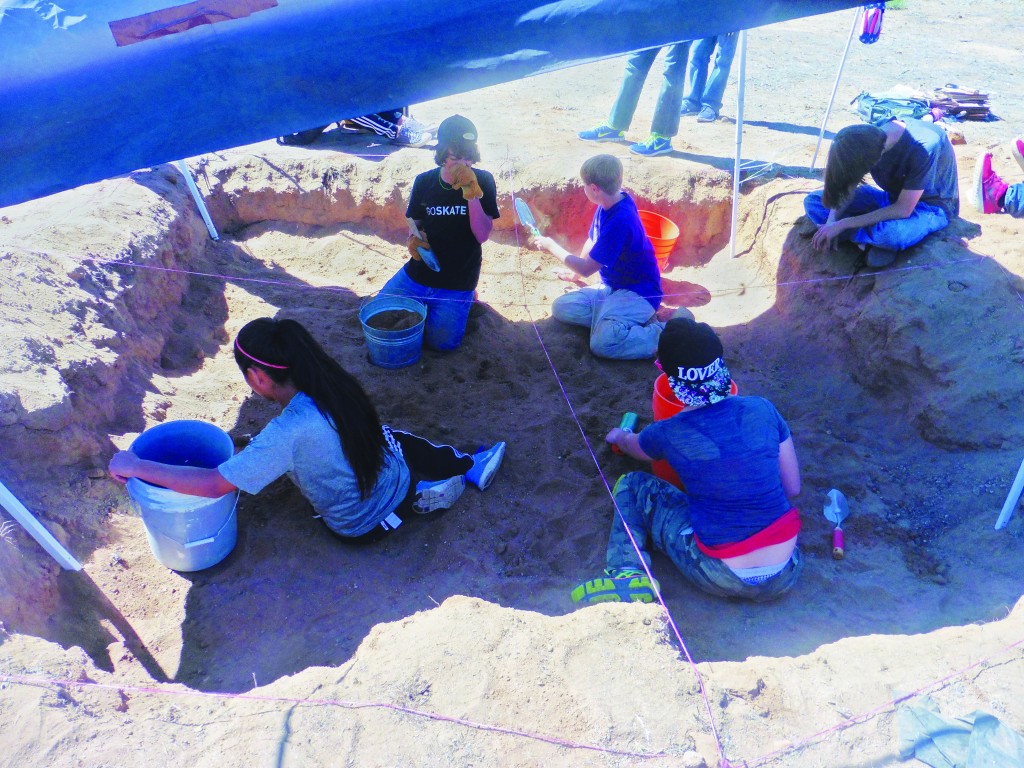 Over the years, The Dig experienced the same trial-and-error process that any unique program would have. However, it has remained true to its purpose, and for the most part kept its emphasis on accurate technique and research. Arguably one of the most memorable events of the eighth grade year, The Dig has proven itself to be as timeless as the many civilizations that it studies.
Over the years, The Dig experienced the same trial-and-error process that any unique program would have. However, it has remained true to its purpose, and for the most part kept its emphasis on accurate technique and research. Arguably one of the most memorable events of the eighth grade year, The Dig has proven itself to be as timeless as the many civilizations that it studies.


